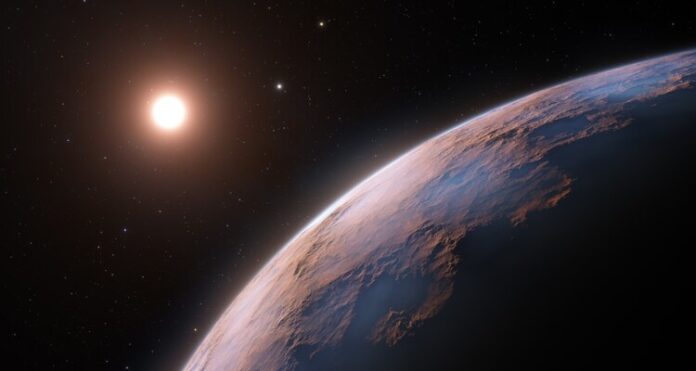
Astronomers have discovered evidence of a third planet orbiting the sun’s nearest neighbor, confirming that planets orbit all of the galaxy’s stars, even the tiniest ones.
While the newly discovered planet is less than half the size of Earth and is most likely too hot to support life, there is still a potential that life exists in the vicinity of Proxima Centauri, Earth’s nearest galactic neighbour.
“The planet isn’t in the habitable zone of the star because it orbits too near,” said astronomer Joo Faria, principal author of a research detailing the finding published this month in the journal Astronomy & Astrophysics. “As a result, it’s improbable that water would be liquid and that the circumstances will be suitable for life.”
In fact, the new planet is so near to its star that it only takes five days to complete an orbit around it – roughly a tenth of the distance between the sun and Mercury.
As the moon is to Earth, it’s also expected to be “tidally locked,” with one face always pointed toward Proxima Centauri. This might result in temperature extremes and reduce the chances of the planet having a stable atmosphere, according to Faria.
Despite the potentially hazardous conditions on the new planet, scientists are ecstatic about the finding.
According to Faria, a researcher at the University of Porto’s Institute of Astrophysics and Space Sciences, the Proxima system might be “packed with planets.”
It’s also a watershed moment in the way scientists hunt for planets around distant stars, he added in an email, which might lead to the finding of even more in the near future.
Other measurements will be needed to confirm the existence of the new planet, but Faria and his co-authors claim to have found it in minute changes in Proxima’s brightness — “wobbles” created by the planet’s gravity.
The first planet discovered orbiting Proxima in 2016 and a second planet discovered in 2019 were discovered using similar procedures.
However, the most recent search employed light collected by a new spectrograph at the Very Large Telescope on a hilltop in northern Chile’s Atacama Desert — a more sensitive device than previously used.
“We can now identify such little signals with such high instrumental accuracy,” Faria said. “This raises the potential of discovering planets like the Earth surrounding stars like the sun in the not-too-distant future.”
Proxima Centauri is the third star in the Alpha Centauri system, and it appears to Earth as a single brilliant star. Despite its great distance, it’s the nearest star system. It’s little over four light-years distant, or roughly 25 trillion miles.
With the human eye, only the light from its two brightest stars, Alpha Centauri A and Alpha Centauri B, can be seen. They orbit each other, but they’re far enough away that their planets aren’t thought to collide.
Because Alpha Centauri A and B are so similar to the sun, scientists believe life may have developed on their planets or moons, thus a specialised space telescope will be used to search for them. Proxima Centauri, on the other hand, is a faint red dwarf star found by telescope in 1915, distant from the system’s two major stars.

















